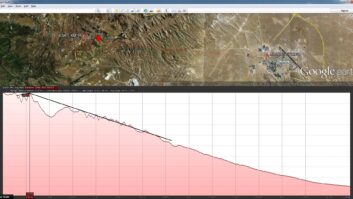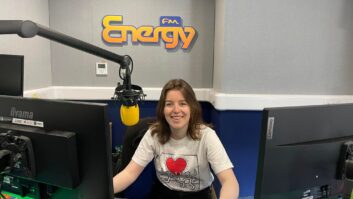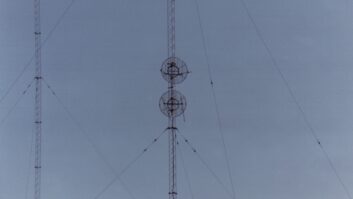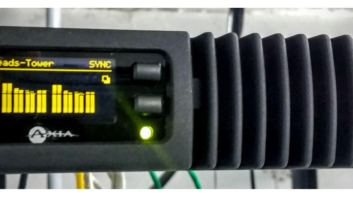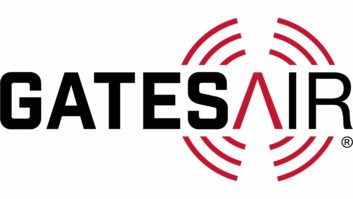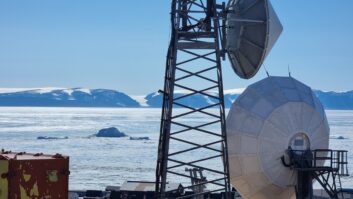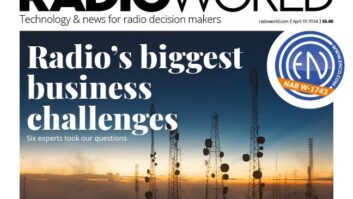Two years after introducing it, Energy-Onix Broadcast Equipment says it is learning more about how its Tele-Link system can be used in STL applications.
The system initially was designed for connecting two points that did not have line of sight, using the Internet. But Net access is a problem at many RF sites, and ISP service can be unreliable.
Now the company is finding that its spread-spectrum capability makes it a suitable STL link where line of sight does exist to the transmitter.
“Existing STL microwave systems do not have the capacity to transfer HD Radio AES/EBU digital or
uncompressed audio,” it says in its product literature. “The installation of a spread-spectrum transceiver within the Tele-Link terminal and the utilization of high-gain antennas and low-loss transmission lines permit the establishment of an STL link whose range can be reliably computed up to as much as 40 miles at 2.4 GHz and 20 miles at 5.8 GHz.”
The use of spread spectrum permits a broadcaster six uncompressed stereo channels in both directions, according to Energy-Onix.
The company has issued a technical update to help stations take better advantage of the system, both for Internet and wireless applications.
“We have found that there does exist a problem with encoding when utilizing conventional cable modems, but a cable modem system normally has adequate bandwidth when decoding,” wrote President Bernard Wise.
“The same situation occurs with the Starband satellite system. It will very comfortably accept in its downlink the Tele-Link information generated by some far-distant studio, but its uplink is very limited. We understand that Starband is planning to triple the capacity of their uplink, and under these circumstances we can utilize Starband as a monitoring source of the remote location, but not for program origination.”
Wise said Energy-Onix has found that ISDN lines are excellent but can be expensive. “Considering all the terrestrial sources available, we find that DSL, with a minimum of 128 kbps in each direction, is the optimum compromise for reliability, performance and cost.
“Some customers are wiling to invest in a T-1 connection if we could provide them with an audio transmission with a minimum of compression,” Wise stated. “Accordingly we have modified the Tele-Link so that the compression rates are selectable from as low as 32 kbps to as high as uncompressed.”
Because the broadcaster owns the equipment, he said, there are no monthly interconnection charges.
“The Internet version of the Tele-Link can transmit both balanced analog and AES/EBU. With the advent of digital, this AES/EBU feature is extremely desirable. The duplex capability of the system permits the location with the higher elevation to be used as a relay point for remote pickup equipment,” Wise continued.
“The only weakness of this system is that there exists a 3- to 4-second delay in the uncompressed mode and an 8- to 10-second delay in the compressed mode. Thus, utilizing the Tele-Link may be difficult for on-air talk shows.”
Wise said Energy-Onix is continuing to investigate applications of the Tele-Link that will enhance its operation. The company has shipped 50 terminals to date.
Info: (518) 758-1690 or e-mail to [email protected]
Energy-Onix Explores Tele-Link STL Applications
Energy-Onix Explores Tele-Link STL Applications





